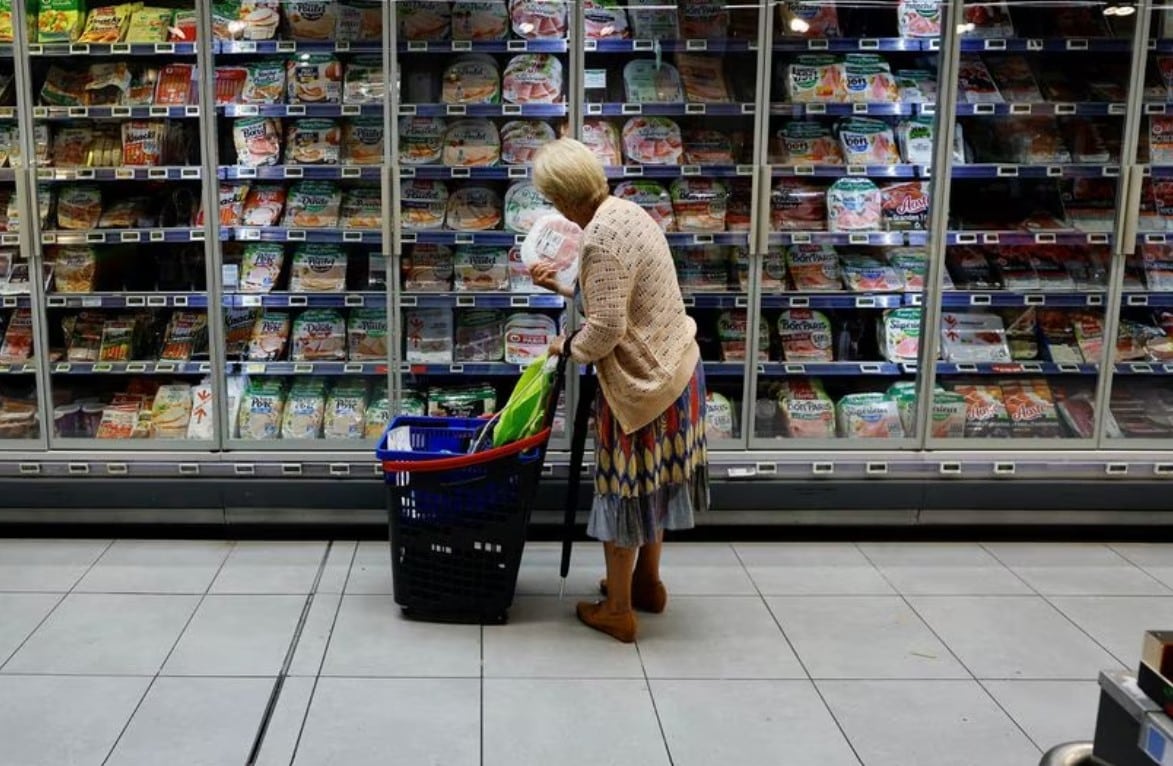Eurozone inflation eased more than expected last month as underlying price growth also slowed, fuelling a debate about the need for further European Central Bank rate hikes beyond an increase later this month.
Inflation in the 20 nations sharing the euro eased to 6.1 per cent in May from 7.0 per cent in April, below expectations for 6.3 per cent in a Reuters poll of economists.
The reading came as only a modest surprise for investors, however, as national data earlier this week foreshadowed the drop.
Core inflation, which excludes volatile food and fuel prices and which has played an increasing role in the ECB’s policy deliberations, fell to 5.3 per cent from 5.6 per cent, coming well under expectations for 5.5 per cent.
The ECB has raised base rates by a combined 375 basis points to 3.25 per cent over the past year to combat runaway prices and has essentially committed to another 25 basis point hike on June 15 given high underlying price pressures.
“Today, inflation is too high and it is set to remain so for too long,” ECB President Christine Lagarde said on Thursday. “That is why we have hiked rates at our fastest pace ever – and we have made clear that we still have ground to cover to bring interest rates to sufficiently restrictive levels.”
JULY HIKE: YES OR NO?
Some economists argued that the bigger than forecast drop in underlying inflation suggests that not much work is left to be done.
“Underlying inflation has probably passed its peak,” Commerzbank economist Christoph Weil said. “This supports our expectation that the ECB will raise key interest rates by 25 basis points for the last time in June.”
Several influential policymakers, including the central bank governors of Germany, the Netherlands and Ireland, have already put a July rate hike on the table, and other economists sided with the policy hawks.
They argue that July must be in play, partly because the ECB has been wrong about the inflation path for so long, it would rather err on the side of caution.
“The May numbers and broader economic data will most likely convince the ECB to continue 25 basis points hikes in June and July and in our baseline forecast to pause after that,” Nordea said in a note.
While Thursday’s benign price data add to the case for caution, Europe’s inflation problem is far from solved as price growth for many core items, particularly services, remains stubbornly high.
Services inflation slowed to 5.0 per cent from 5.2 per cent while price growth for industrial goods eased to 5.8 per cent from 6.2 per cent, still excessive but both moving in the right direction.
The ECB is also likely to take some comfort from the slowdown in food inflation to 12.5 per cent from 13.5 per cent as pressures on that front were still expected to build for some time.
RECESSION RISK
Lower energy prices could push down headline inflation faster than some forecasts, but recent wage settlements could keep core inflation high.
Eurozone wage growth is hovering in the 5 per cent to 6 per cent range, twice the rate that would be consistent with the ECB’s inflation target.
But wages need to catch up after inflation ate deep into real incomes for years and the ECB is hoping that once inflation slows, wage growth will follow, so they will mutually extinguish each other.
While that is a plausible scenario, the bloc’s labour market is exceptionally tight and firms, particularly in services, are reporting increasing labour shortages, an upside risk for wages and hence inflation.
Another potential concern for the ECB is that economic growth appears less resilient than thought, particularly in manufacturing, with a raft of indicators showing that industrial activity could weigh on the overall economy even as services boom.
This raises the risk that sharply higher borrowing costs could tip the bloc into recession, an outcome the ECB has tried to avoid.
Financial investors see two more rate hikes from the ECB, with the first move fully priced in by June and a second in either July or September.







Click here to change your cookie preferences